Kitchen Utensils and Cooking Terms - 1869
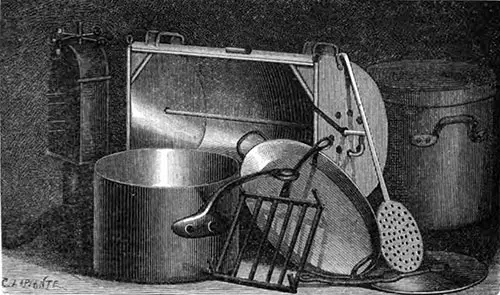
Kitchen Utensils
Every kitchen, large or small, should be provided with the best possible utensils; this is a rule which any sensible person must admit; for it is unreasonable to expect cooking to be well done without the necessary implements.
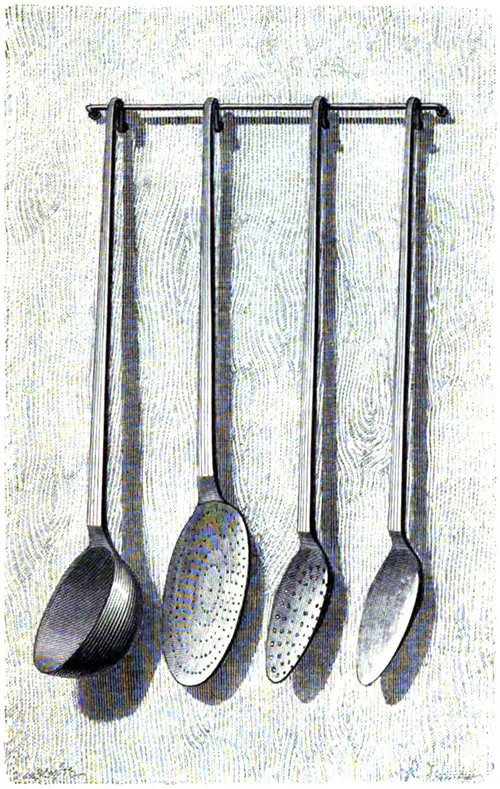
Spoons and Skimmers
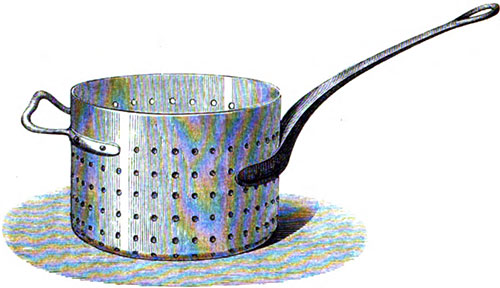
Large Copper Colander

Oval Dish for Gratin
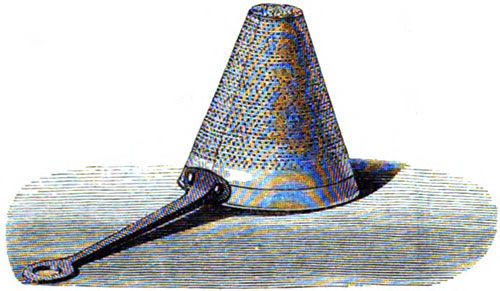
Pointed Gravy Strainer

Box of Larding Needles
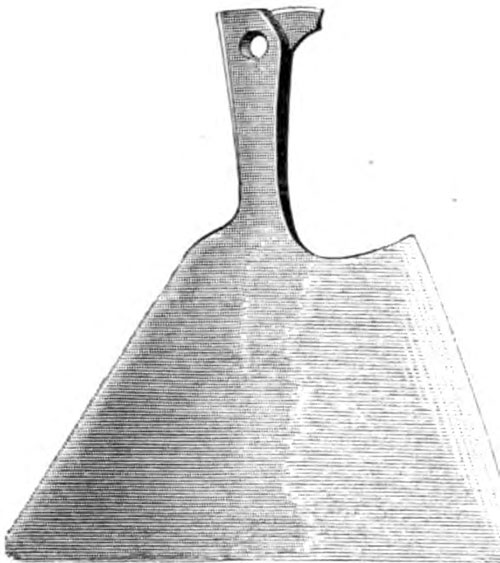
Meat Cleaver
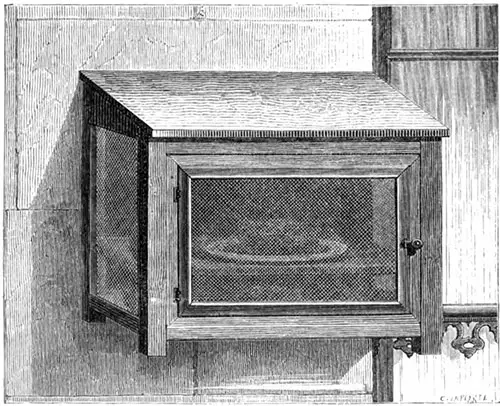
Meat Safe to Fit a Window
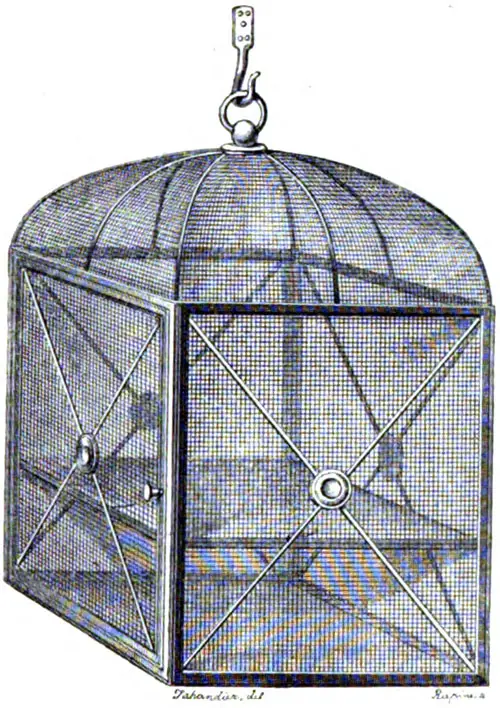
Hanging Meat Safe
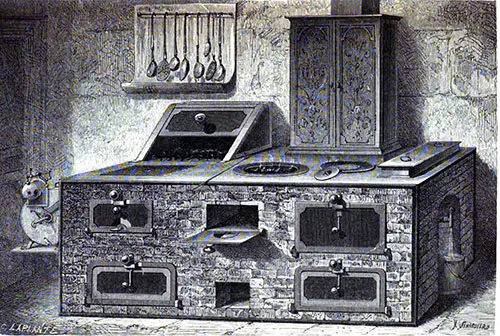
Improved Stove
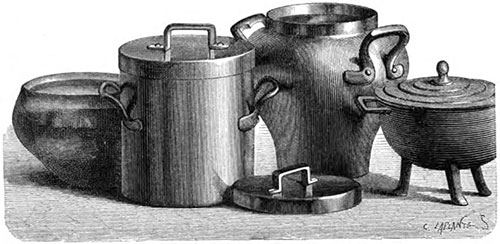
Stock Pots
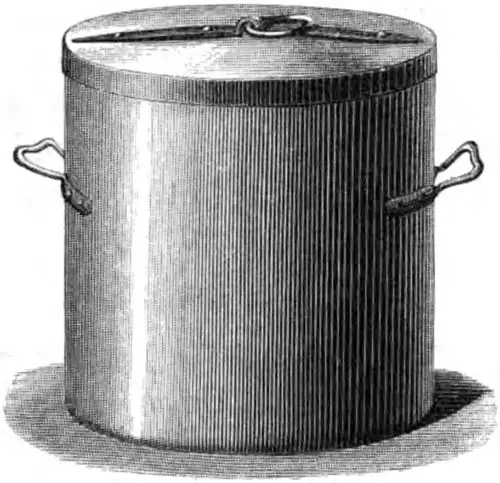
Copper Stock Pot
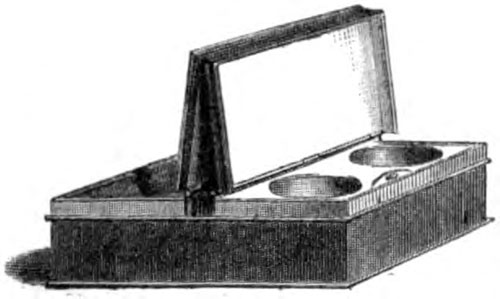
Seasoning Box
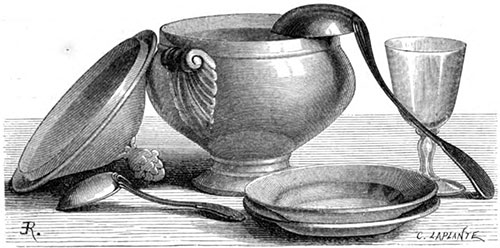
Soup Tureen and Accessories
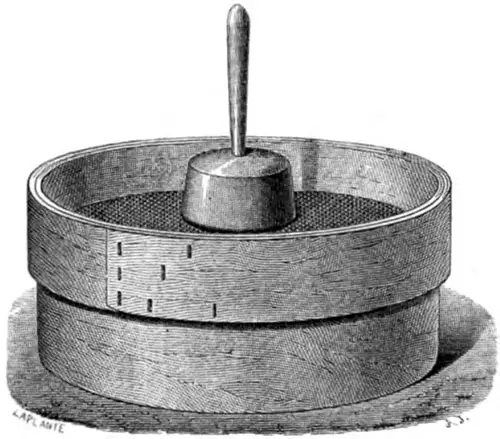
Sieve for Purees
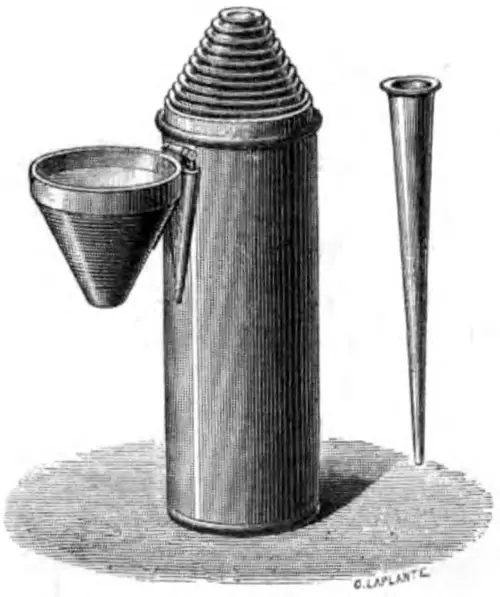
Long or Vegetable Cutter Box

Horizontal Grid Iron
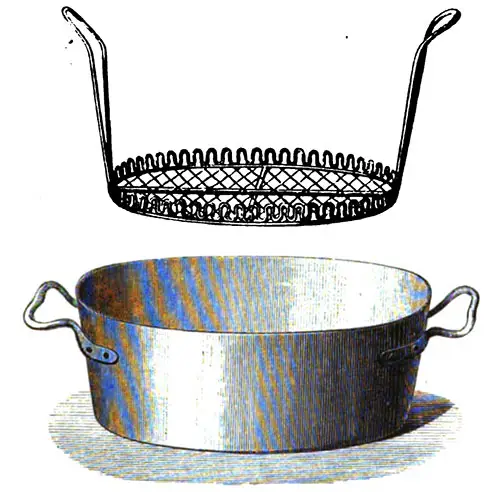
Frying Kettle and Drainer
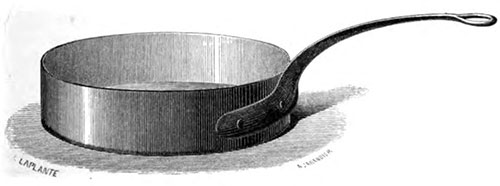
Saute Pan
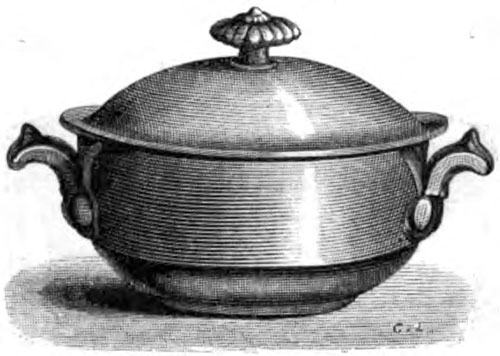
Potting Pan
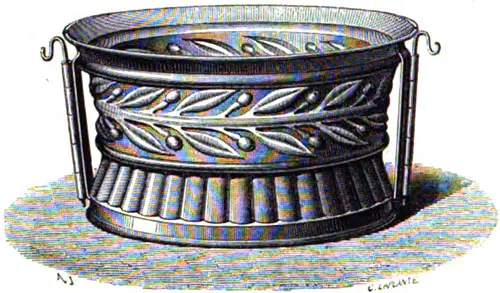
Pie Mold
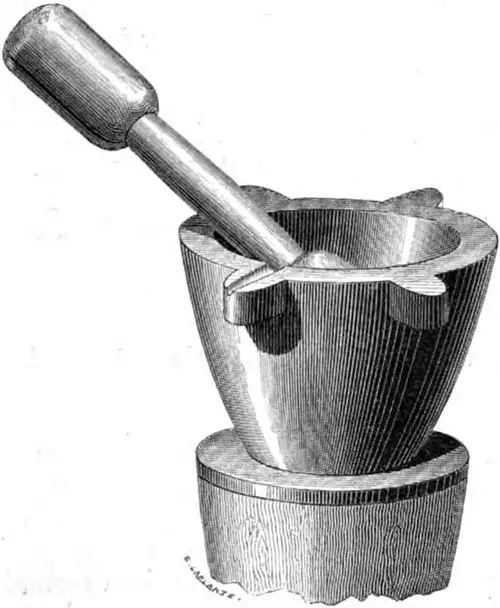
Pestle and Mortar
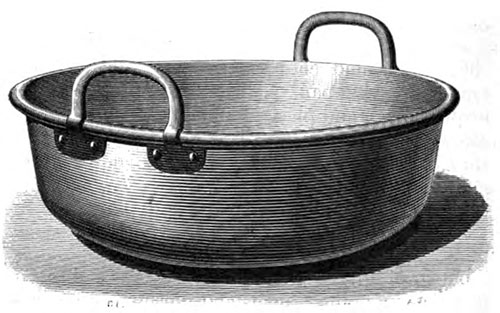
Preserving Pan
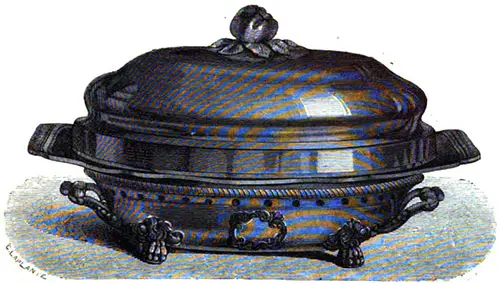
Dish Warmer
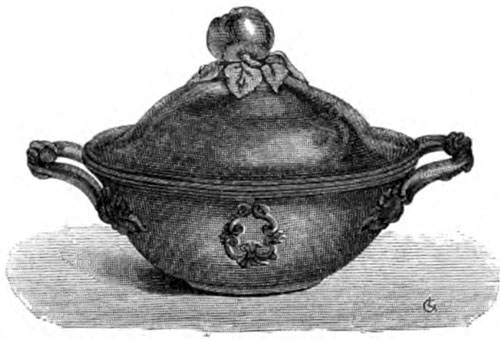
Silver Casserole
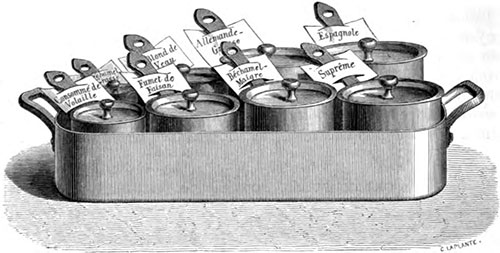
Set of Bain-Marie Pans
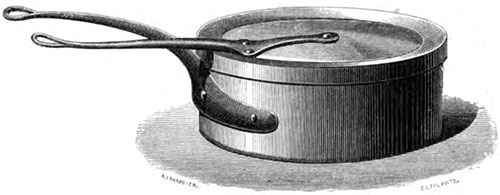
Glazing Stew Pan
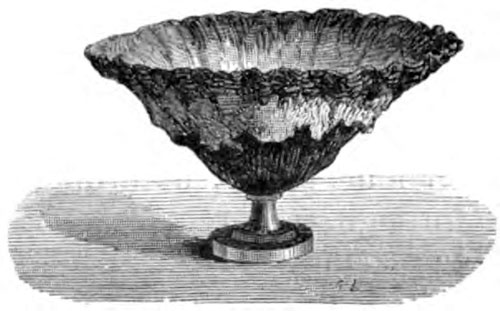
Coquilles for Hot Hors-d’œuvre
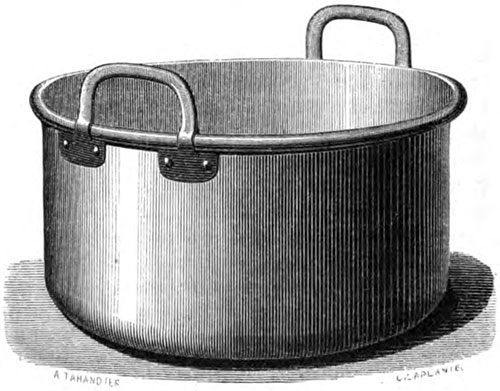
Blanching Pan
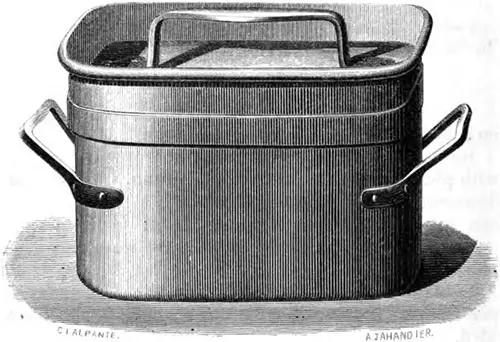
Braising Stew Pan
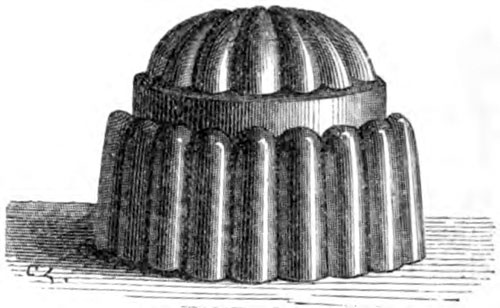
Partridge Gallantine Mold

Box of Paste Cutters
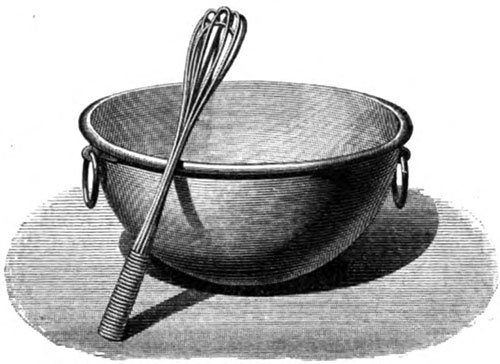
Whipping bowl and Whisk
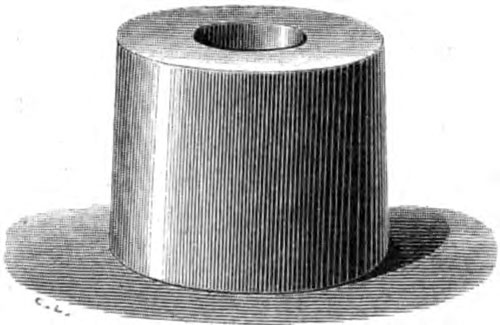
Cylindric Mold
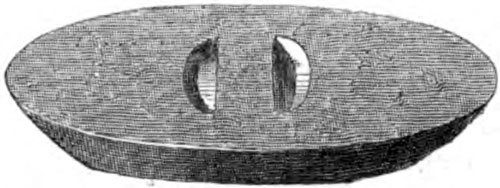
Wooden Stand for Dishing Entremets of Pastry
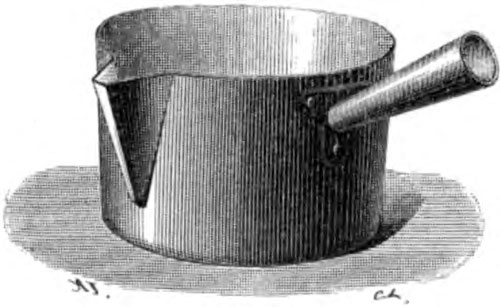
Sugar Boiler
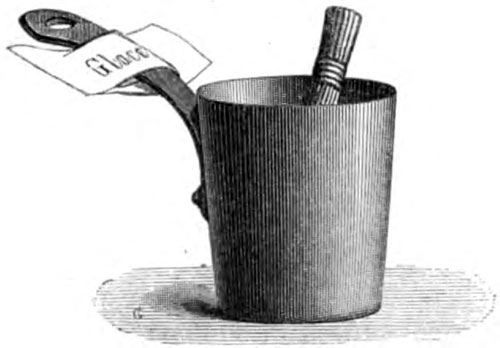
Bain-Marie Pan for Glaze
Cookery Terms used in the late 1800s
Cookery terms follow the progression of the age and therefore terminologies and methods may be obsolete in modern-day kitchens.
To blanch is to parboil, or scald in water, for a determined length of time, certain vegetables, with a view to remove their acrid flavor— calves' heads and feet are similarly blanched, to soften them and facilitate their trimming.
To braise is to cook meat slowly in a closed stewpan, adapted to hold live coals on its cover.
To clarify; this applies to the operation of clearing, or freeing of foreign bodies, jellies, gravies, broths and butter. Jellies are clarified with egg; gravies and broths are clarified, with meat, and butter, by melting on a slow fire and straining through a cloth; it is then used in many cooking operations.
To cool is to pour cold water over vegetables, &c, after blanching, to preserve their color.
To glaze is to paint with a brush, dipped in thick gravy, called glaze, larded meats, roasts, hams, and sautés. This term is also applied to the sugaring over of fritters, pancakes, and cakes.
To moisten is to add enough liquid in a stewpan for stewing.
To reduce is to boil broth down to a glaze, gradually slackening the heat.
To sauter is to fry with little butter over a brisk fire.
To score is to make cross incisions on fish or vegetables, to facilitate cooking.
To singe is to pass plucked fowls or game over a flame—a spirit lamp is very handy for this.
To trim is to cut away those portions of a fowl or piece of meat which spoil its appearance.
To truss is to tie a fowl, or game, together with string, passed through it in such way as to prevent it getting out of the shape given to it, either for roasting or boiling.
To turn is to cut vegetables or fruit, for garnishes, into the shape of corks, balls, pears, etc.
